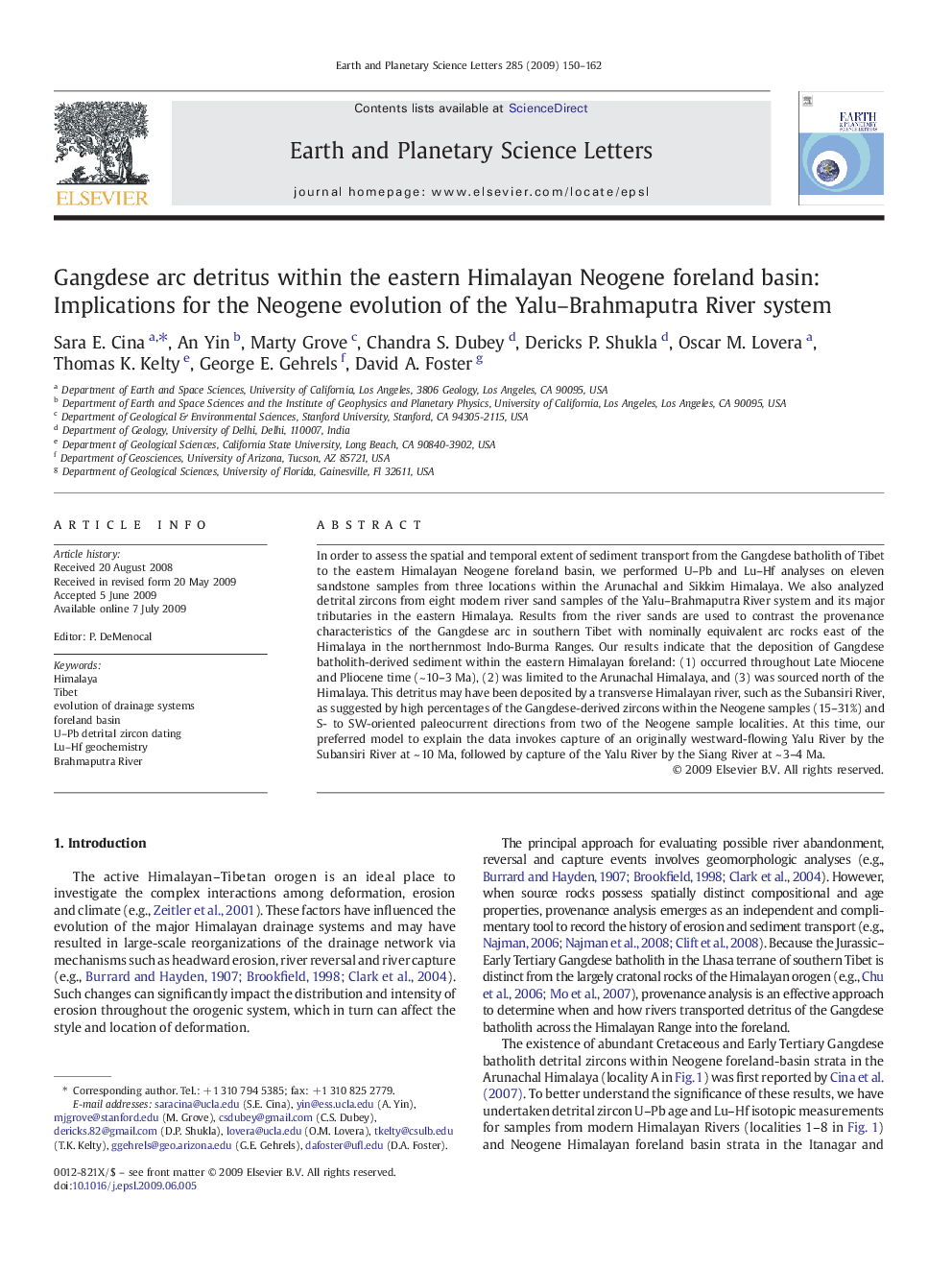| Article ID | Journal | Published Year | Pages | File Type |
|---|---|---|---|---|
| 4679177 | Earth and Planetary Science Letters | 2009 | 13 Pages |
In order to assess the spatial and temporal extent of sediment transport from the Gangdese batholith of Tibet to the eastern Himalayan Neogene foreland basin, we performed U–Pb and Lu–Hf analyses on eleven sandstone samples from three locations within the Arunachal and Sikkim Himalaya. We also analyzed detrital zircons from eight modern river sand samples of the Yalu–Brahmaputra River system and its major tributaries in the eastern Himalaya. Results from the river sands are used to contrast the provenance characteristics of the Gangdese arc in southern Tibet with nominally equivalent arc rocks east of the Himalaya in the northernmost Indo-Burma Ranges. Our results indicate that the deposition of Gangdese batholith-derived sediment within the eastern Himalayan foreland: (1) occurred throughout Late Miocene and Pliocene time (~ 10–3 Ma), (2) was limited to the Arunachal Himalaya, and (3) was sourced north of the Himalaya. This detritus may have been deposited by a transverse Himalayan river, such as the Subansiri River, as suggested by high percentages of the Gangdese-derived zircons within the Neogene samples (15–31%) and S- to SW-oriented paleocurrent directions from two of the Neogene sample localities. At this time, our preferred model to explain the data invokes capture of an originally westward-flowing Yalu River by the Subansiri River at ~ 10 Ma, followed by capture of the Yalu River by the Siang River at ~ 3–4 Ma.
